One of the stages of IVF, which is largely applied by fertility centers in different countries, requires individual sperm selection.
Therefore, the results of the procedure depend on the partner's fertility potential. In the case it is reduced, a correct diagnosis is crucial to manage the process.
Typically, sperm are selected based on their appearance under the microscope. Further option is semen analysis, which provides information on the sperm count, motility and pH. However, up to one third of all semen analyses leave the patient's reduced fertilizing potential unexplained.
The role of hyaluronan
Hyaluronan, or hyaluronic acid, is a type of sugar found in connective, epithelial, and neural tissues. Hyaluronan is a significant component of the cells surrounding the egg, reffered to as the cumulus oophorous, or cumulus cells. These cells perform multiple functions in the maturation of the oocyte.
At the final stages of maturation, sperm develop the ability to attach to hyaluronan. Thus, hyaluronan binding is a representative indicator of sperm health and maturity. The attachment of sperm to the cumulus oophorous may serve as a natural mechanism to select mature sperm during normal conception.
Markers of sperm health and maturity
It has been shown that a regular semen analysis is limited in its ability to evaluate the fertilizing potential of the semen sample. The parameters that indicate the state of the sample but are not measured through a standard test include:
- Cytoplasmic inclusions. At the final stages of maturation, a functional sperm cell discards excess cytoplasm. Some processes may hinder normal sperm development and lead to excess residual cytoplasm retaining near the sperm head. It is referred to as cytoplasmic inclusion, or retention. This abnormality may be indicated with a high powered microscope, but is highly difficult to detect in an in vitro fertilization cycle.
- Sperm creatine phosphokinase. A significant correlation has been found in a number of studies between elevated levels of sperm creatine phosphokinase and reduced sperm function and lower pregnancy rates.
- HspA2 Chaperone Protein. This protein participates in a wide variety of cellular processes and is found in higher amount in normal sperm. Sperm cells with low HspA2 levels are at an increased risk of having chromosome abnormalities and DNA fragmentation.
Sperm Hyaluronan Binding
Whether sperm attach effectively to hyaluronan or not, may serve as an important indicator of the fertility potential of the sample. High levels of hyaluronan binding indicate that the sperm do not contain abnormal cytoplasmic inclusions. While the latter are highly difficult to detect when selecting sperm to fertilize eggs in an IVF cycle, HBA test (or Hyaluronan Binding Assay) is simple and short.
Studies have also shown that sperm selected for hyaluronan binding have
- a frequency of chromosome abnormalities 4-6 fold lower (compared to unselected sperm),
- higher DNA integrity (more than 99% of HA-binding sperm compared to approximately 55% in the unselected sperm),
- lower levels of sperm creatine phosphokinase,
- higher HspA2 chaperone protein levels.
The core of the method
During the test, a specimen is collected in the same manner as for a conventional semen analysis. The sample is then mixed with a medium substance and applied on a slide coated with hyaluronan. Mature sperm will attach to the hyaluronan (bound). Visually the attachment manifests as sperm having their heads stuck but tails vigorously moving. Immature sperm cells will move freely (unbound).
The percentage of bound sperm is then calculated, constituting the HBA score. The score higher than 70% is considered normal, less than 70% is considered abnormal.
If your HBA score is abnormal, the embryologists will use hualuronan-containing media to select mature sperm for injection during ICSI.
Correlation between HBA and pregnancy success
A study conducted to assess pregnancy success rates using IUI, IVF, or ICSI has found that every 1% increase in the HBA score correlates with 4% increase in the probability of pregnancy.
A 2011 multicenter study of couples doing IVF has found that men with normal and higher HBA score produced embryos that looked healthier under a microscope compared to men who have a low score.
Recommendations
Being a new method, hyaluronan-binding selection is still investigational. A recent multi-center double blind randomized clinical trial has shown that selected sperm specimens
- Did not demonstrate either increase or decrease in the fertilization incidence,
- Correlated with less fragmentation in embryos,
- Correlated with higher percentage of embryos that reach blastocyst stage,
- Correlated with higher clinical pregnancy rate,
- Correlated with lower miscarriage rate.
Sperm selection according to hyaluronan binding is recommended for men with a low percentage of mature sperm in order to increase chances of pregnancy and to reduce the risk of miscarriage.
Men with normal and higher HBA score will not benefit from this selecting procedure.


